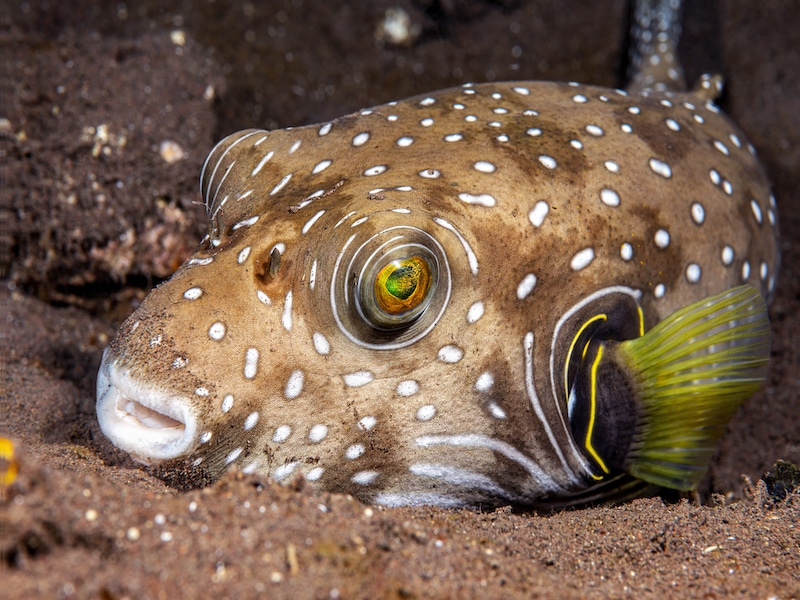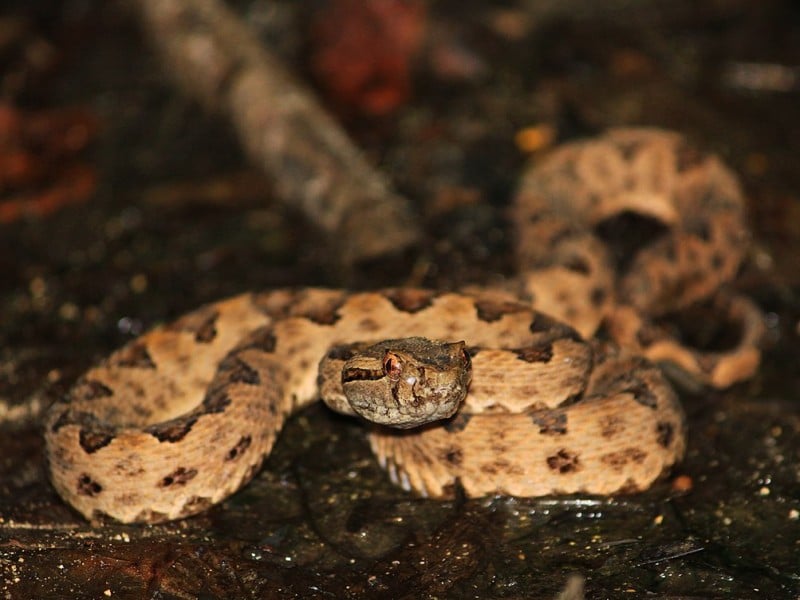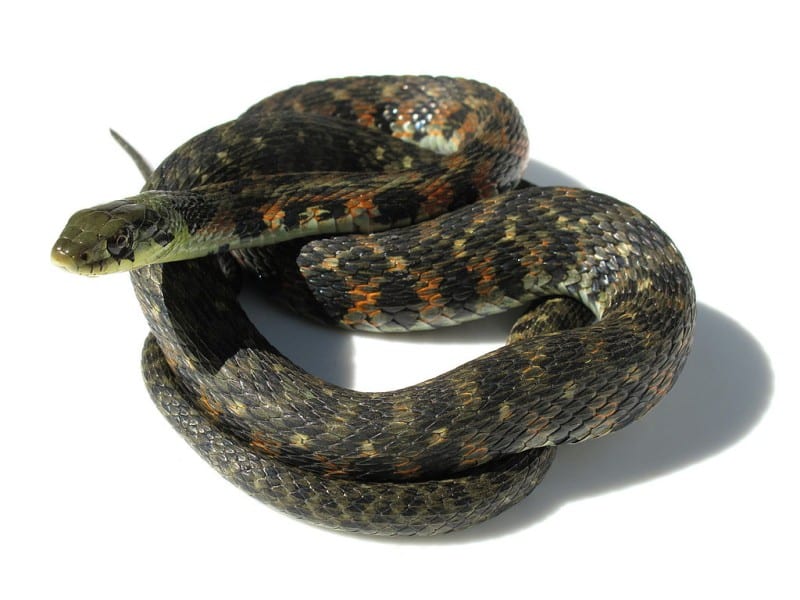
While the cities of South Korea have plenty to offer in terms of some of planet Earth’s most cutting-edge technology and most impressive infrastructure, deep in the forests and wildernesses of South Korea lie some of the most dangerous animals in the world.
Korea may not strike the average traveler as a dangerous country, and it isn’t excessively dangerous at all in terms of crime rates or threat of natural disaster. However, there are some dangerous animals that reside in Korea that may just pose a threat to you and your traveling group if you’re not careful.
We have compiled a list of nine of the most dangerous animals that you may well encounter during your time exploring Korea. From the cities to the shorelines, there is no guarantee that you won’t bump into one of these dangerous animals in Korea. There is by no means a need to panic if you do encounter of one these dangerous animals in Korea, but being armed with knowledge and understanding will never do you any harm when it comes to traveling the world.
1. Jellyfish

It is thought that these days there are around 124 different species of jellyfish that can be found around the coast of the Korean peninsula. And, of these 124 species of jellyfish, approximately 100 of them are poisonous to humans.
This, of course, makes them not only one of the most dangerous animals in Korea for travelers through this country, but also one of the most abundant. In fact, if you are intending on spending any time on the coast of the Korean peninsula, from the beaches of Busan to the coastal cliffs of Jeju-do, the chances are that a dip in the waters will result in a close encounter with one of the country’s many kinds of jellyfish.
Despite there being over 100 species of poisonous jellyfish in and around Korea, the severity of their poison can vary greatly from species to species. Undoubtedly one of the most dangerous species of jellyfish in Korea is the Nosura’s jellyfish, whose stings can be fatal for humans. They are formidably large and would certainly elicit a large amount of fear if you came into close range of one.
If you ever do find yourself near a jellyfish in Korea, or if you suspect that you have been stung by one, it is important to rinse the site of the sting with plenty of seawater or running water. Cold compresses are encouraged if there is swelling, and it is best advised to get in touch with a lifeguard or pharmacist for further advice on how to treat the sting. In the case of a severe allergic reaction to the attack, seek medical assistance immediately.
2. Wild Boar

Wild boars can be found mainly in the more mountainous areas of Korea and are, by their very nature, herbivores. However, just because they are not a predator to humans, this does not mean that they don’t pose any sort of threat to them. In fact, wild boars can be incredibly dangerous to humans that encounter them, if startled, confused, around their young, or not treated with their due respect.
In addition to this, wild boars are actually quite a common creature on the Korean peninsula, so it is certainly worth being aware of how best to interact with one of these beasts should you come into close quarters with a wild boar during your exploration of the Korean countryside.
Wild boars are actually one of the fastest-growing animal populations on the Korean peninsula. So much so, that they are threatening many urban cities and conurbations in South Korea as their population spreads further and further out from the highlands and rural areas of the country. Furthermore, when these herbivores have ventured down from their habitats in the mountains in search of food, there have been reported instances of human fatalities when confronted with the confused creature, perhaps as a result of panic or stampede.
This is why it is important to remember to treat any creatures you cross paths with in Korea with the utmost respect. Ensure you maintain a safe distance from any wild boars you see if you decide to explore the mountains of Korea and ensure that you don’t make them feel threatened or vulnerable as you pass them.
3. Pufferfish

The pufferfish is surely one of the strangest-looking creatures you can encounter in the world’s oceans. However, the strange pufferfish is one creature that can be very harmful, and potentially deadly, to humans in more ways than one.
First of all, there is the threat they pose as one of the most dangerous animals in Korea when encountered in their natural environment. Not only are the spikes of a pufferfish intended to be threatening and painful to potential threats and predators, including humans, but they are more than just spikey and uncomfortable. When touched, they emit a very harmful substance, known as tetrodotoxin, that can be fatal for other fish and humans. In fact, this tetrodotoxin is regarded as so deadly for humans that pufferfish are thought to be among the most venomous animals in the world.
On the Korean peninsula, and other East Asian countries such as China and Japan, pufferfish can also pose an additional threat to your life: through consumption. In these countries, pufferfish is considered a delicacy, and its meat can be found in many restaurants in the country, despite the fact that even the internal organs of many pufferfish also include the deadly tetrodotoxin.
Chefs are trained for around three years in order to properly and safely prepare pufferfish for consumption so that no harm comes to its consumers, so if you consider yourself to be an adventurous traveler or avid foodie there should be no reason for you to experience any undue worry from wanting to try pufferfish for yourself. However, whether you’re in the ocean or in a seafood restaurant, it is important to be mindful of the harm that these strange fish could cause you.
4. Japanese Pit Viper (Mamushi)

Pit vipers can be found in all sorts of different variations all over Asia. In fact, there are two different types of pit viper listed in our definitive guide to the most venomous snakes in Vietnam. And, The Japanese pit viper (more commonly referred to as Mamushi) is yet another venomous snake that you may encounter when traveling through Southeast Asia. Not only that, but it is commonly heralded as the most venomous snake in Japan and Korea, and is certainly not a reptile you would want to get on the wrong side of.
So, if you find yourself traversing the swamps, meadows, marshes, woodlands, or rocky mountains of Korea, it is important to beware that one of these slippery snakes may well be lying in wait in the undergrowth as it sleeps or stalks its prey.
Not only are Japanese pit vipers fairly common snakes in this part of the world, but their bites are among some of the world’s most painful and poisonous, so it is important to know exactly how to react should you have the misfortune of being bitten by one of them yourself.
As well as resulting in a fatality, the bite of a Japanese pit viper has been known to cause organ failure, hallucinations, palsy, and miscarriage for pregnant women. However, because the Mamushi snake is so common, effective antivenoms have been developed, and so if you do get attacked by one of these snakes, it should not be too difficult to access the treatment you need to recover.
Having said this, the recovery time can be lengthy, due to the potency of the venom. Therefore, while these snakes are most common in Japan than in Korea, it is still important to exercise caution when traversing areas of the country that are known to be habitats for the Japanese pit viper.
5. Tiger Keelback

The tiger keelback, not to be confused with the tiger snake, is yet another venomous snake that is endemic to East and Southeast Asia and that can be found when traveling around South Korea. In fact, the tiger keelback snake is fairly widespread throughout South Korea, so this is definitely one to look out for. However, one saving grace may be that, although the tiger keelback is absolutely venomous and dangerous, bites do not occur that frequently, and fatalities from these attacks are even more infrequent, thanks to the availability of antivenom.
This being said, it is important to still remain vigilant if you come into contact with one of these snakes. Most reported snakebites from a tiger keelback have been from one of these slippery little guys somehow getting indoors. As their fangs are located at the back of their jaw, it is difficult for them to administer the venom to their victim, but not impossible. And, should you get bitten by a tiger keelback, you will experience a lot of bleeding from the site of the wound, as well as potential internal bleeding. So, in order to completely avoid this uncomfortable experience, beware of the tiger keelback when exploring South Korea.
6. Giant Asian Hornet

When it comes to the most dangerous animals in Korea, the giant Asian hornet can be considered among the worst of them. Small but mighty, these bugs are not to be taken lightly. In fact, though they may be smaller than some of the other dangerous animals on this list, the giant Asian hornet is actually the largest hornet on Earth, and so they can be quite formidable if you come across one, or many, flying about. And, unfortunately, these hornets do tend to attack in groups, making their presence doubly frightening.
The giant Asian hornet usually builds its nest in the more mountainous regions of a country, so you should pay particular attention if you decide to go hiking or exploring through the beautiful mountains of South Korea. A single giant Asian hornet cannot inject enough venom from a sting to result in a fatality. However, as we already understand, these critters do attack in groups, and multiple stings can result in enough venom entering the body to cause paralysis or death, even in people who do not suffer from allergic reactions from bee or wasp stings.
There is very little that can be done to prevent contact with a giant Asian hornet, apart from the usual caution and respect that you would demonstrate towards any other dangerous animal. It is best to avoid anything that could be a nest and not to make any sudden or aggressive movements when you do encounter a giant Asian hornet in South Korea.
7. Mosquito

If you are a citizen of the world, then you already know just how problematic and dangerous the seemingly humble mosquito can be. You will almost certainly come across mosquitoes when you’re traveling around South Korea, whether you’re spending your time as a city slicker in Seoul, or wandering through the wildernesses of the peninsula. Mosquitoes are everywhere, so it’s important to be prepared.
As well as just being a general nuisance by biting and leaving sites of itchiness and irritation, the mosquitoes you will encounter in South Korea can also cause diseases such as malaria, dengue fever, Japanese encephalitis, chikungunya fever, and the Zika virus. Obviously, no one wants to go traveling or on vacation and contract any of these scary-sounding ailments, so it’s important you take every necessary precaution against these horrible diseases before you travel and during your stay in Korea, no matter which region you find yourself in.
That means taking any inoculations that you may need in order to gain access to the country, as well as any medications that are recommended to you personally in order to fight against them. Plus, things like mosquito repellent and nets may come in handy during your travels. Luckily, as mosquitoes are so common, you may well find that wherever you’re staying is already well-equipped to ward against these blood-sucking insects. So, hopefully, there will be no need for any undue worry.
8. Grey Wolf

The grey wolf, or, more specifically, a subspecies of the grey wolf known as the Mongolian wolf, is fairly commonplace in some countries in Asia, including, unsurprisingly, Mongolia, China, parts of Russia, and Korea. In Korea, and most other countries that it inhabits, the habitat of the grey wolf will be in the mountains, so you will have next to no chance of bumping into one of these lupine friends if you plan on spending your time in Korea either in the city or on the beach. However, if you are planning on going hiking or exploring the mysteries of the mountains in South Korea, it is important to at least be aware that this is where the Mongolian wolf may well be dwelling.
Even if you do come across a grey wolf while in Korea, the chances of being attacked by one are very slim. In places like Mongolia, the grey wolf is revered and the locals know that these beautiful creatures are far more afraid of humans than we are of them, so they will most likely try and avoid you as best as possible if they catch a glimpse of you nearby. However, having said this, the grey wolf is still, after all, a wild animal and so their behavior can never be wholly guaranteed or predicted.
If they feel that your presence is aggressive or poses a threat to either them or their vulnerable young then there is a chance that they could attack you. It is worth noting, though, that they are only likely to cause harm or injury to humans as retaliation to a perceived threat; they are unlikely to attack out of the blue. This is why it is always important to be calm and respectful when exploring areas of South Korea that are primarily habitats for wild animals.
9. Ussuri Brown Bear

The Ussuri brown bear is another large predator that you may encounter during your travels around the Korean peninsula, as well as if you then decide to move on to Japan or Russia. Like many predatory mammals, they are, unfortunately, under much greater threat from us than we are from them.
In many of the countries where the brown bear is native, they are considered big game, and the subsequent hunting has vastly reduced their population in the wild, reducing them to a vulnerable species. In fact, this is one creature on our list of dangerous animals in Korea that will only pose a threat to you if you are planning to visit the less popular country of North Korea. This is because the Ussuri brown bear has been made extinct in South Korea because of the sheer rate at which they were being poached in the country. Conversely, the Ussuri brown bear is regarded as something of an emblematic animal for the country of North Korea.
The chances of encountering an Ussuri brown bear while visiting North Korea is incredibly slim, not least because tourists there are rigidly surveilled and guided at all times, rarely venturing outside of the capital city of Pyongyang. However, it is possible to visit some of the country’s natural sites, where the Ussuri brown bear may be residing.
In other countries where they are native, such as Japan, they have something of a fearful reputation as a ‘man-eating’ beast due to a large number of reported bear attacks in areas with a dense population of Ussuri brown bears. As you would imagine, there are no official records of attacks by these Ussuri brown bears in North Korea, either on North Korean natives or tourists, but it is not outside the realms of possibility to imagine that they are rare, but probably not non-existent.
As such, if you are visiting North Korea and you are being taken on an excursion to visit some of North Korea’s points of wilderness and natural beauty, be as vigilant as you would be anywhere else, as well as respectful towards any habitats or creatures you encounter.
What is the most dangerous animal in Korea?
The giant Asian hornet must be considered the most dangerous animal in Korea. It has been given the moniker of “murder hornet” – and for good reason. Not only can the sting of one giant Asian hornet be excruciating, but they often sting in groups, which can lead to paralysis or even death.
Are there poisonous spiders in Korea?
There is only one species of poisonous spider known in Korea: the banana spider. The banana spider is by no means among the world’s most dangerous spiders. However, the bite of a banana spider can result in extreme pain and swelling.
Are there venomous snakes in Korea?
Yes, there are a few different venomous snakes in Korea. As well as the Japanese pit viper and the tiger keelback, Korea is home to two more venomous snakes: the amur viper and the ussuri pit viper.
Are there wolves in Korea?
Yes, there are wolves in Korea. The Mongolian wolf, a subspecies of the grey wolf, is native to the Korean peninsula. They mostly live in Korea’s mountains.